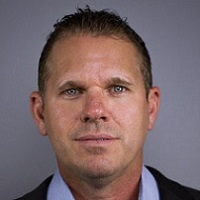 By Lee Horner, CEO, Synzi
By Lee Horner, CEO, Synzi
Twitter: @SynziCare
Twitter: @lee_a_horner
Caregiving for a loved one can bring out positive and negative emotions. Feeling frustrated and angry with everyone, from the care recipient to the doctors, are common emotions, especially for those caring from a distance. As the National Institute of Aging highlights, long-distance caregivers may not feel as physically exhausted and drained as the primary, hands-on caregiver, but they may still be worried and anxious. Long-distance caregivers can feel guilty about not being closer, not doing enough, and/or not having enough time with the person. These individuals might also worry about being able to afford to take time off from work, being away from family, and/or the cost of travel when they are visiting a loved one.
[callout title=”Start Streaming” link=”https://healthcarenowradio.airtime.pro/” new_tab=”yes” icon=”hb-moon-radio”]Catch our HealthcareNOW Radio shows streaming Health IT Talk 24/7 [/callout][spacer]
Long-distance caregivers typically share several characteristics, according to the National Alliance for Caregiving:
- Most (94 percent) provide care to a relative.
- The average age is 47, meaning that the long-distance caregiver may be in the midst of a career and/or also balancing care for others in one’s primary home, such as children.
- Nearly 7 out of 10 (67 percent) are female.
- Perhaps due to the travel involved, 39 percent visit the care recipient less than once a month. However, half of long-distance caregivers visit more frequently— 33 percent visit once a week, 14 percent visit once a month, and 13 percent visit a few times a month.
- To note, long-distance caregivers report higher levels of financial strain and emotional stress than their caregiving counterparts who live close to, but not with, the care recipient.
In 2014, Gail Gibson Hunt, the founder of the National Alliance for Caregiving, was hopeful for future development of new tools to coordinate care between caregivers, patients, and healthcare providers. “Technology needs to meet caregivers where they are, making their lives easier and their efforts more effective,” Hunt explained. Family support is critical to patient care and technology plays an important role in helping remote caregivers provide high-touch in a high-tech manner. BDO’s Candid Conversations on Elder Care surveyed 487 NEJM Catalyst Insights Council members in March 2018 about their plans to prepare for the growth of the aging U.S. population and where the greatest opportunities for improvement and disruption lie in elder care. The majority (63 percent) agreed that technology could mitigate the social determinants of health providers say are most crucial to improving elder care such as familial support.
Post-acute care organizations are now embracing virtual care communication platforms to provide patients with access to care while enabling their long-distance caregivers to be more engaged in their loved one’s care. Home health agencies such as Trilogy Home Healthcare readily recognize the benefits a platform can bring to all involved. Trilogy uses virtual technology solutions to enhance staff and patient communications as well as to provide patients’ out-of-town family members with a convenient way to become involved in their loved ones’ care, thus alleviating the guilt often associated with not living close enough to provide hands-on support.
This article was originally published on the Synzi Blog and is republished here with permission.
[separator type=”default”]
[icon_box icon=”hb-moon-volume-high” icon_position=”left” title=”Have an Amazon Echo?” align=”left”]
Say “Alexa, play HealthcareNOW Radio Station”
[/icon_box]
[icon_box icon=”hb-moon-mobile-3″ icon_position=”left” title=”Have an iPhone?” align=”left”]
Say “Hey Siri play HealthcareNOW Radio”
Want notification to your iPhone of new episodes? Say “Hey Siri subscribe to HealthcareNOW Radio”
[/icon_box]
[separator type=”default”]
